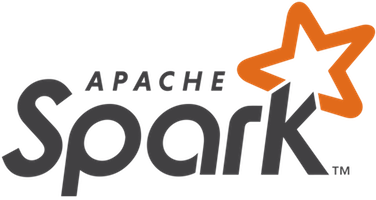

Spark SQL
Apache Spark 3.2
@jaceklaskowski / StackOverflow / GitHub / LinkedIn
The "Internals" Books: books.japila.pl
Spark SQL
- Data Processing with Structured Queries on Massive Scale
- SQL-like Relational Queries
- Distributed computations (RDD API)
- High-level "front-end" languages
- SQL, Scala, Java, Python, R
- Low-level "backend" Logical Operators
- Logical and physical query plans
- Dataset (and DataFrame) data abstractions
- Encoder for storage- and performance optimizations
- Reducing garbage collections
- Switch to The Internals of Spark SQL
SparkSession
- The entry point to Spark SQL
- Use SparkSession.builder Fluent API to build one
- Loading datasets using load discussed later
- spark-shell gives you one instance as spark
- Switch to The Internals of Spark SQL
DataSource API — Reading and Writing Datasets
- Loading datasets using SparkSession.read
- dataset (lowercase) = data for processing
- Writing Datasets using Dataset.write
- Dataset (uppercase) = a distributed computation
- Loading and writing operators create source and sink nodes in a data flow graph
- Pluggable API
- Switch to The Internals of Spark SQL
Reading/Loading Datasets
val dataset = spark.read.format("csv").load("csvs/*")
- SparkSession.read — DataFrameReader
- format
- option and options
- schema
- load
- format-specific loading methods discussed on next slide
- Switch to The Internals of Spark SQL
Built-In Data Sources (Formats)
- File Formats
- csv
- json
- orc
- parquet
- text and textFile
- jdbc
- table
Writing/Saving Datasets
dataset.write.format("json").save("dailies")
- DataFrame.write — DataFrameWriter
- format
- mode
- option and options
- partitionBy, bucketBy and sortBy
- insertInto, save and saveAsTable
- Switch to The Internals of Spark SQL
Schema
- Schema = StructType with one or many StructFields
- Implicit (inferred) or explicit
- dataset.printSchema
- Schema is your case class(es)
case class Person(id: Long, name: String) import org.apache.spark.sql.Encoders val schema = Encoders.product[Person].schema - Switch to The Internals of Spark SQL
Ad-hoc Local Datasets
- Seq(...).toDF("col1", "col2", ...) for local DataFrames
- Seq(...).toDS for local Datasets
- Use import spark.implicits._
- All Scala Collections supported (almost)
- Switch to The Internals of Spark SQL
Demo: Creating Spark SQL Application
- Use IntelliJ IDEA and sbt
- Define Spark SQL dependency in build.sbt
- libraryDependencies
- Write your Spark SQL code
- spark.version
- Execute sbt package
- Run the application using spark-submit